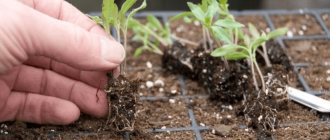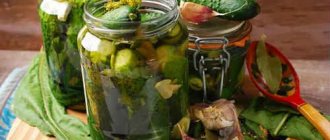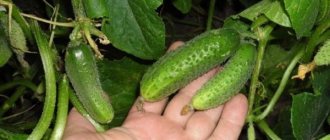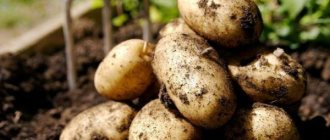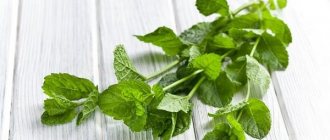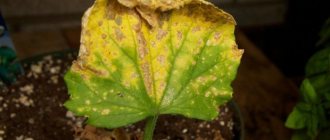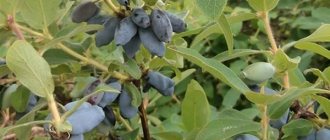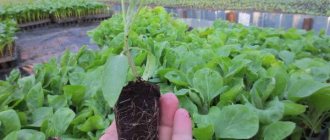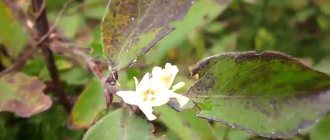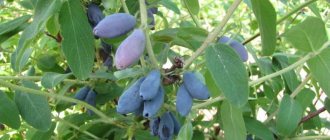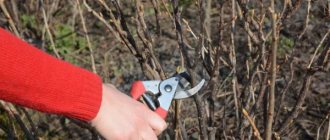What is the purpose of pruning?
The shrub is naturally prone to thickening its crown. If the plant is not trimmed regularly, it becomes overgrown and turns into a thick tangle of tangled shoots. Sunlight and fresh air no longer penetrate into the crown; berries are formed only at the tips of the branches. Such bushes are prone to fungal diseases and suffer more from pest invasions.
Timely pruning and formation of the correct shape of the bush affects the yield and health of the plant:
- berries are formed not only along the periphery of the crown, but in the depths of the bush - the yield increases;
- the plant is evenly illuminated;
- thanks to the correct formation of honeysuckle, the bush is well ventilated;
- annual pruning helps to get rid of diseased and damaged branches - breeding grounds for diseases.
Finally, a properly formed honeysuckle bush looks attractive.
When is the best time to prune honeysuckle?
Traditionally, all garden trees and shrubs are pruned in spring and autumn. To prevent the plant from losing strength after pruning, excess branches are removed at the moment of weak sap flow.
Spring terms
In spring, honeysuckle is rarely pruned (only if sanitary pruning is necessary), since the plant begins active growth early - in April. From the moment the buds on the honeysuckle begin to swell, it becomes too late to prune; sap flow has already begun.
Spring pruning is carried out while there is still snow (in March - early April), and the temperature ranges from 0 to +5 degrees.
Autumn terms
The formation of the honeysuckle crown is carried out in late autumn, after leaf fall. At this time, the plant has already completed the main growing season and is preparing to plunge into winter sleep.
A bush devoid of leaves is visible to the gardener in all its glory; it is convenient to assess its condition and trim it correctly. The young shoots have already become woody and are ready for wintering.
In autumn, honeysuckle is pruned in October, depending on the climate of the region.
After cutting, 2-3 weeks should pass before the onset of serious frosts (with temperatures below -10 degrees). If winter cold sets in early, pruning is carried out at the beginning of the month. If the winters are warm, the shrubs are trimmed in late October - early November.
Rules for pruning edible honeysuckle
Before starting the procedure, it is necessary to check the readiness of the instrument. Secateurs, files, and garden knives must be sharp and in full working order. To cover cut areas on branches, prepare garden varnish or resin (resin).
Pruning honeysuckle has a number of features that a gardener should know about:
- the shoots of the bush are very fragile, you need to work with caution;
- To make honeysuckle easier to withstand the pruning procedure, it is watered abundantly on the eve of pruning;
- better flexibility in early morning shoots;
- up to 3 years, honeysuckle grows slowly and does not require formative pruning;
- when cutting out shoots, you should remember that berries form only on last year’s branches;
- In one haircut, you cannot remove more than a third of the crown volume.
When removing a branch, you should trim it so that no stump remains. The cut is made clean and even, leaving no burrs or tatters of bark.
Cut shoots are not left lying around near the plant; they must be removed from the garden. Pests can hide under deposits of plant residues in the garden; old branches serve as a breeding ground for diseases.
Transplanting honeysuckle in autumn
All actions during transplantation are similar to those you perform when landing. Shrubs must be positioned so that the distance between them is at least a meter. Dig a hole from 45 to 50 cm deep. Then add superphosphate or potassium salt to it. You can apply organic fertilizers in advance.
Be sure to ensure that the root collar is located at soil level.
Transplanting honeysuckle in the fall is best done in late summer or early September. At this point the bush is no longer growing. That's all the basic recommendations, following which you can get a good harvest of honeysuckle. Also have an excellent hedge on the property.
Scheme for pruning honeysuckle depending on the stage of growth of the bush
Apart from sanitary cutting, which can be done at any age, honeysuckle is not shaped until the age of 3 years. The plant is given the opportunity to strengthen and grow the root system and the main skeleton of the branches.
Up to 5 years formative pruning
By the age of 4-5 years, the bush takes on a spreading spherical or cupped shape. The time has come to form the correct crown, which will enable the plant to bear fruit abundantly in the future.
The order of work is step by step:
- Trim the horizontal branches of the lower tier that grow too low and lie on the ground.
- Remove young shoots, leaving 2-4 strong shoots for replacement.
- They cut off shoots - tops that grow vertically from a horizontally located shoot. The tops thicken the crown and almost do not form a crop.
- Shoots growing deep into the bush must be pruned.
- Thin, poorly developed and damaged branches are removed. Branches that have formed weak growth are shortened by a quarter, stimulating their growth.
Leave last year's honeysuckle branches, strong, healthy and well-developed. They should grow symmetrically, from the center of the bush to the sides (in a fan). It is enough to leave 5-6 healthy skeletal branches for one bush.
From 5 to 8 years thinning
To maintain a sparse, well-lit and ventilated crown shape, honeysuckle is thinned out annually. Remove excess young shoots, leaving only a couple of strong shoots to replace the fruit-bearing branches.
Old shoots that have given away the harvest are cut out in the fall. It is the old branches that are breeding grounds for diseases.
From 8 to 10 years anti-aging pruning
You can rejuvenate, that is, give the plant an impetus for active vegetation, with the help of a radical haircut. Honeysuckle is thoroughly thinned out, removing old branches. They are not cut flush to the ground, but leaving a stump of 3-5 cm, from the dormant buds on which young and strong branches will begin to grow.
Another option for rejuvenating pruning is not so radical and involves shortening the shoots to a height of 35-40 cm. In the second year after pruning, the bush will reach its previous size due to young and healthy growth.
How to rejuvenate a honeysuckle bush
Anti-aging pruning is carried out after 8 years from the date of planting. The plant is trimmed according to a certain pattern:
- The crown inside the bush is thinned out.
- Branches that have stopped growing are cut off as close to the base as possible.
- The young central stems are left behind.
When the old branches make up 70% or more, all the tops of the shoots are cut off. But there is also a slightly tougher method, which is used only in extreme cases, if the bush is very thick, begins to hurt, or is covered with moss.
- All old stems are cut to the ground.
- They form a bush from young growing shoots.
Attention! If the bush falls apart, it is trimmed in the same way.
On edible bushes, berries form at the tops. Annual branches are not shortened because this reduces the yield.
Rules for sanitary trimming of bushes
Such a haircut as an “ambulance” for a bush can be carried out at any time of the year, not only in spring and summer. In case of branch damage, disease or pest infestation, the shoot is removed completely or only part of it (including the healthy part of the shoot).
After removing the diseased or pest-affected shoot, the entire bush is treated with a fungicide or insecticide, including the soil around the plant.
Standard sanitary pruning is carried out in early spring, when branches broken by snow are removed from the bush.
Calendar of work on caring for honeysuckle plantings
- March – Sowing seeds.
- April – Sanitary pruning of bushes every two years. Rejuvenating pruning of old bushes. Spraying with a 2% nitrophen solution every two years. Inspection of plants after autumn planting. Application of nitrogen fertilizers: 20 grams of urea, or 50 grams of ammonium nitrate, or 40 grams of ammonium sulfate per square meter. meter of tree trunk circle.
- May – Application of phosphorus and potassium fertilizers: 40 grams of double superphosphate and potassium salt or 100 grams of nitrophoska per square meter. m. Loosening, weeding of tree trunk circles.
- June – Harvesting and planting green cuttings. Collection and processing of berries.
- July – Loosening, weeding of tree trunk circles. Spraying against pests that chew leaves. Caring for green cuttings. Sowing seeds.
- September – Planting in the ground for growing rooted cuttings and seedlings. Digging tree trunk circles. Mulching tree trunk circles with compost every two years.
- October – Preparing the soil and planting honeysuckle in a permanent place in the garden. Sowing seeds.
Good luck to you and a good harvest!
Tags
honeysuckle
Gardening tips for growing honeysuckle
Experienced gardeners recommend planting at least 4-6 honeysuckle plants on a plot. The point is cross-pollination - the more pollen from plants of different varieties gets on the flower, the more abundant the harvest of berries will be. Honeysuckle is planted in a group, placing the bushes in close proximity to each other (1.5-2 m).
Honeysuckle is pollinated by insects, mainly bumblebees. To attract these beneficial insects to the garden, clover and other fragrant meadow flowers are sown between the bushes. During the flowering period, honeysuckle is sprayed with “honey water” - add 1 tbsp to 10 liters of water. spoons of honey.
When choosing a plant variety, it is better to give preference to modern dessert varieties of honeysuckle. If you choose varieties with different fruiting periods, you can enjoy the berries for several weeks.
When choosing honeysuckle seedlings for planting, you should opt for plants that are 2 years old. Such a seedling has a size from 50 to 80 cm, its bark is clean and smooth.
In adult plants, the bark is not smooth; it constantly forms a new layer, and the old coating peels off and falls off. A similar phenomenon can be observed on raspberries.
To make honeysuckle berries sweet, the bushes are planted in an open and sunny area. In the shade, the fruiting of the bush is weaker and the berries do not gain the required sweetness. Honeysuckle may become bitter due to too hot weather and lack of watering. During the period of berry filling, the plantings should be watered abundantly.
Often inexperienced gardeners are worried about ripening berries falling from the bush. This is a natural process and is not associated with disease or pests. The surface of the soil around the plant can be covered with thick cloth and clean fallen berries can be collected periodically.
Often the gardener does not get a harvest of sweet berries because of birds. Blackbirds and other birds are not averse to eating vitamin berries. Plantings are protected from birds by stretching a special net that will block access to the bushes but will not harm the birds.
Decorative climbing honeysuckle should be pruned at least 2 times a year:
- in the spring they carry out a sanitary haircut;
- in summer, after flowering, remove unnecessary young shoots;
- in the fall, after leaf fall, cut off old shoots.
